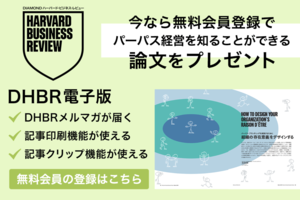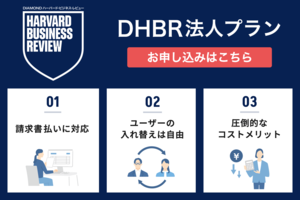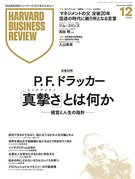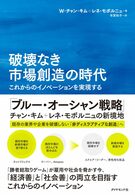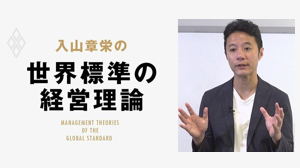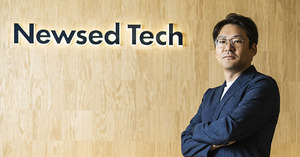-
Xでシェア
-
Facebookでシェア
-
LINEでシェア
-
LinkedInでシェア
-
記事をクリップ
-
記事を印刷
All firms globally are responding to a new and unprecedented set of business challenges. Securing competitive advantage and high performance is harder than it has ever been because the 21st century is a far more complicated and changeable global operating environment. New technologies are turning established industries upside down. New and non-traditional competitors from anywhere in the world are wrestling market share from established companies across all sectors and in domestic markets. Customer buying behaviour is reshaping expectations of variety, bundling and personalisation of the products and services they purchase. Sales cycles are getting ever shorter. All of these drivers of change, and more, are forcing leadership teams to urgently reevaluate where they wish to compete for market share, which strategies will yield best results and how to build organisations – and valuable human resources especially - capable of delivering those strategies.
It is well understood that managing human resources effectively is critical to firm performance[1]. And yet, established human resource strategies don’t seem up to the task of securing performance and value in the face of 21st century organizational requirements for enhanced integration, agility and innovation[2]. For instance, Japanese human resource management (HRM) has been characterized traditionally by three distinct features: lifetime employment, seniority based pay and promotion, and corporate unions. These employment practices were once the source of Japan’s tremendous industrial success. They are now considered by some to be out-dated and the cause of underperformance. Many up and coming executives we speak to in established Japanese companies express appetite for looking to the international scene for inspiration for how their company might reinvigorate their workforces and perform better.
The reality is that Japanese companies in today’s challenging business environment are struggling against the same forces as their Western and emerging economy peers - domestic market maturation, intense international competition and diminishing returns from previously highly profitable product led strategies. And like their Western and emerging economy counterparts, one of the greatest opportunities for Japanese companies is to reform how they manage their human resources and adopt a strategic approach to enable superior growth and performance - globally.
This article draws upon on-going and collaborative cross-national research exploring the linkages between corporate strategy and organizational design in the global marketplace. The authors of this article base their findings upon numerous interviews and workshops with senior executives of global companies regarding their priorities and strategies for the highly competitive, volatile business environment of the future. Professor Jonathan Trevor, Associate Professor of Management Practice, University of Oxford, with his area of expertise in organizational design and human resource management, reviewed how companies were redesigning the ways in which their resources – including human resources – enable them to be capable of achieving their strategies for competitive advantage[3]. Professor Masahiro Kotosaka, Associate Professor, Keio University, investigated[4] effective strategies for accelerating business growth and the importance of human resources in determining the pace of the growth.
In this article, drawing upon expertise in human resource management and strategic management, as well as the extensive joint research with leading Japanese and Western companies, we frame the future of Japanese human resource management and offer a set of new principles that combines the best of the ‘old’ and ‘new’, ‘East’ and ‘West’, to thrive in a 21st century global business environment that knows no boundaries.
The Three HR Pillars Of The Past
Japanese HRM has been characterized traditionally by three distinct features: lifetime employment, seniority based pay and promotion, and corporate unions. These features remain especially prominent among larger, more complex Japanese companies that came to dominate Japanese industry in the post-war period of high-growth.
Lifetime employment: has been a key feature of many large Japanese companies, especially in key sectors such as manufacturing and consumer electronics. Even today, employee tenure remains much higher on average in Japan than in other countries. Lifetime employment served a clear purpose: employees expected job security for which their employer demanded loyalty. This ethos of high mutual commitment allowed employers and employees to invest in their joint project, the business. Low employee turnover enabled employers to invest significantly in training their staff to a high level and developing firm specific human capital. Similarly, employees demonstrated their loyalty and commitment to the firm by working intensively, because the company’s interests were perceived as equivalent to their own. The long-term employment relationship fostered high levels of trust, and facilitated tacit, informal collaboration between workers. Furthermore, career progression emphasised rotation through a wide range of job functions within the company. Over time, high potential employees became specialists of their firm, and not of any function.
Tenure And Age Based Pay And Promotion: was the norm for many years. Especially among large Japanese companies, promotion and wage increase were linked explicitly to employee age. Employees in their fifties received on average two and a half times the wages of new workers, regardless of their skills or position[5]. Employees were highly incentivized to remain with a company for the entirety of their career. In the early nineties, research revealed the pace of promotion over the course of seven years was the same for all the new workers in approximately forty per cent of large companies[6]. It was widely believed that this egalitarian approach to career progression promoted stability and encouraged workers to share their knowledge and expertise with others, because they were not in competition for pay or promotion. The collaborative working atmosphere was facilitated by a clear hierarchy of authority, established by seniority.
Active Inclusion Of Corporate Trade Unions: in company level collective bargaining over pay and working conditions was the norm. High potential managers on a senior management track were expected to assume a leadership position within the corporate union before progressing on to a position of management influence. The stable working environment and general absence of corporate restructuring and pay cuts facilitated high trust and collaboration between management and union representatives on a range of HRM issues and decisions, including continuous business process improvement.
A Gradual Breakdown Of The Status Quo
As established as they were, the three pillars of Japanese HR practice have been in decline more recently. This is due firstly to the progressive internationalization of Japanese companies. The appreciation of the Japanese yen, which started after the introduction of variable currency rate in 1973, was father accelerated by the Plaza Accord in 1985. A considerable number of Japanese companies transferred production overseas. The share of employees in overseas operations has increased steadily from the late 1980s onwards, throwing up some stark comparisons between the established and relatively unique Japanese employment system and those of overseas partners and competitors. To facilitate international expansion, many Japanese companies adopted a hybrid model, in which Japanese domestic operations remained unchanged and overseas operations reflected local employment practices.
The unbalanced system was further challenged by the stagnation of the domestic economy, as well as the intensified international competition, especially from emerging markets. The Japanese asset bubble economy from 1986 to 1991 is often said to be the turning point for Japanese management[7], then considered ‘state of the art’ and the object of much emulation by Western competitors (e.g. quality circles, Kaizen). It was a watershed moment for established Japanese management practice, as the economic circumstances of many Japanese companies became tied to what was perceived as the dysfunctions of the domestic financial system. Under-performing companies had to rethink the fundamentals of the three pillars. The large bankruptcy of several domestic companies and the underperformance of exporting companies prompted numerous corporate restructurings and the gradual deconstruction of the traditional characteristics of Japanese management. The government has since abandoned its once cherished policy to protect domestic companies from acquisition by foreign buyers, with the result that several prestigious Japanese companies have been acquired by private funds and foreign competitors.
These developments have almost wiped out the mythology of the three pillars: lifetime employment norm, seniority based pay and promotion, and collaborative corporate union activities. Companies such as Nissan Motors, Japan Airlines, Sharp, and other companies that once faced a catastrophic situation are now equipped with much more meritocratic human resource management system. The current trend towards technological disruption, short-term profitability and intense global competition is again forcing traditional Japanese corporations to rethink how they manage their human resources for value in future.
A Shift To The 21st Century
Like elsewhere in the world, Japanese industrial structures are undergoing profound change due to automation and mass customization. Technologies associated with cognitive computing, intelligent robotics and autonomous operations now dominate the factory floor, and are connected via networks to servers that collect and analyse the data gathered from all part of the production process. Customers are increasingly demanding individual attention and tailor made products and services, and complex service delivery procedures have to be modified more and more frequently to meet these fluctuating consumer preferences.
Digital Revolution: Often referred to as the “fourth industrial revolution”[8], we observe a corresponding new stage of technological advancement in the companies we work with. Computing and networking are now increasingly affordable, reliable, and mature to equip every device in the production and distribution channel – the so call “Internet of things”. Further, the reduction in size and price of these networks devices permit their incorporation in a wide range of products and consumer devices. Connected devices can generate astronomical quantity of “big” data without any pre-specified purpose. If the information gathered via such ubiquitous computing and networking were utilized, programmed systems would soon be processing much larger amount of data than a human operator could ever process, digest and mobilize.
To cope with this unprecedented volume of data, information systems will by necessity be coded to gradually improve and refine themselves autonomously, making decisions that are not within the scope of human prediction. As a significant by-product, customer segmentation as we currently conceive it will no longer be sufficient for success in the market place for many established products and services. Competitors with new technologies will certainly start to offer tailored functionality and taste in mass-produced products and services. Such a process is already underway in the form of “mass-customization”. It will require a near total redesign of how companies meet customer demand in future.
Technological Redundancy: In this new reality, the role of people in the production process will change fundamentally. Organizations should prepare to develop human resources – including skills, behaviours and knowledge - that can cope with and compete in the age of automation and mass customization. A recent study by the Oxford Martin School, Oxford University, predicts that forty-seven per cent of white collar, professional and technical occupations (e.g. accounting) are at risk of being automated within twenty years[9]. This prediction suggests that companies globally will have to shift the focus of their human resource strategies and investments. The new competitive landscape requires a different variety of talent and related management systems. As individuals have to prepare to survive in the world predicted by Oxford Martin School, organizations should become a global workplace of the future that is likely radically different to that of today, irrespective of location.
Network Organization: Many scholars predict the global workplace of the future will come to resemble a network more than a hierarchy[10]. The network will likely consist of multiple species of talent, but principally human resources responsible primarily for delivering performance and human resources responsible primarily for leading business transformation to keep pace with the changing external environment. The network will form an ecosystem in which information and knowledge is widely dispersed, as opposed to being concentrated at the top of a hierarchy or in the board room. The network is primarily informally governed – key to its success is flexibility, and the ability to rapidly configure and reconfigure personnel, teams and competencies around emerging customer preferences[11].
The network, as an Enterprise Ecosystem, will come to rely more and more on external talent and partners, both to innovate but also to deliver value added goods and services, beyond what could ever be delivered purely internally. Cultural values will guide every day behaviour even more than basic rules, policies and procedures. Formal aspects of organisation might, if too prescribed, constrain discretionary effort, flexibility and collaboration – all of which are highly desirable employee attributes. Within the network, performers will focus on delivering result today, with transformers focussed on building capability for tomorrow.
A 21st Century People Philosophy
Amidst these radical changes, we observe several novel HR trends in the forward-looking companies with whom we work. They emphasise the management of a hybrid system of employment – the harnessing of two principle types of talent - to achieve the tricky balancing act of simultaneously performing and transforming to remain fit for purpose in the 21st century global business environment[12].
Performance Oriented Talent: the first type of talent is focussed on maximizing business performance and delivery of results. Performing talent, or ‘Performers’ as we refer to them, are employed to deliver short-term performance against visible and measurable targets. The focus is on maximising opportunities for growth and outperforming rivals for market share by aggressive marketing, cost management and efficiently matching supply with demand. All HR systems, from performance management to reward, are geared to align key personnel to goals and promote a high-performance culture.
What is desired of Performers is peak productivity against targets specified in advance. Performers are typically incentivised by individualistic financial incentives and formal performance management processes focussed on measurable outputs (e.g. financial performance). Their purpose is not question why, but to do and perform according to highly prescribed targets, processes and rules of the company. Performers are required to have a strong bias for action to maximise – or stretch – their performance as much as possible. For this, they require high clarity of their mission and objectives, and to believe set targets are achievable and the rewards worth it[13].
Transformation Oriented Talent: the function of transformation oriented talent, or ‘Transformers’, is to steer the business towards long-term success. Organisations globally are under pressure to respond to “Information Age” pressures to respond to shifting patterns of buying behaviour. Customers are demanding enhanced variety, bundling and personalisation of the products and services they consume. This is an age where exploiting economies of association is becoming more important to competitiveness than industrial-age strategies for exploiting economies of scale. To continue to succeed, businesses must reinvent their business models and refresh their product and service offerings at an increasingly fast rate. The requirements for firms to be innovative have never been higher – nor has the requirement for talent capable of transforming the organisation to align it to the changing business environment.
Transformers have broad role remits and are empowered to seek to influence positive change within the business, wherever they perceive there are opportunities. In a departure from the past, influence no longer (necessarily) equates to seniority. Rather, Transformers are sourced from across the organisation and at all levels. Transformers need to be capable of managing complex trade-offs. They are not required to deliver against hard targets, unlike their performing brethren; they draw upon their collective wisdom to help the organisation navigate complex scenarios. They exhibit thought leadership, influencing decision making interpersonally as opposed to hierarchically. They are often highly networked and their performance is focussed on role inputs, such as their own personal development. Transformers have few hard targets, and fewer still which are set in advance.
Traditionally, Performers and Transformers were not clearly differentiated organizationally – or if they were, it was according to rank in the formal organizational hierarchy. In the traditional organization, in both the East and the West, those at the top wielded the most amount of influence to set the direction of the travel, with everybody else (i.e. workers) being responsible for implementing their orders as efficiently as possible. Few were capable of a high performance specialist focus, whilst also being capable of leading enterprise wide change, if even given the opportunity. This is changing in the 21st century organization.
Based upon our interactions with forward-looking companies in all sectors, we believe that Transformers and Performers can independently, but jointly, develop the organization fit for the 21st century. Consider the engineering company, Rolls Royce. The firm has invested heavily over the past fifteen years in transforming to become capable of delivering superior solutions to its clients. A key management innovation is to rely much more on employee self-direction to achieve simultaneous co-ordination and innovation through novel organisation-wide connections and creative problem solving. The Rolls Royce matrix organisational structure enables horizontal and vertical connections across customer facing business units globally. The four-way matrix is highly complex. To operate effectively it relies upon informal discretionary contribution by staff – Performers and Transformers - across the organisation at all levels. Collaborative working is also a key element of the high commitment culture, and delegated for the purposes of exchanging knowledge, work flexibility and peer to peer monitoring of quality and performance. The “low control” environment is necessary to crowd source solutions to the problems of delivering complex customers solutions worldwide. A Rolls Royce executive summed up the commercial logic behind employee empowerment and the participative culture being built at all levels: “We have a very clear vision of what we’re trying to do, where we can push new product introduction through these facilities much more quickly than we’ve ever done. We get the whole organisation engaged in these objectives, rather than it being hitherto what had been a management problem to solve. We get the minds and intellect of the whole organisation into solving our problems”.
Encouraging network connections between Performers and Transformers is a critical knowledge management process at Oracle Corp. Having pursued an aggressive strategy of market penetration within the enterprise software domain, Oracle has more recently also focussed on developing a solution based customer offering to counter similar moves by its main rival, SAP. The move combines the best elements of its core database business as well as value added enterprise applications and consulting. Transformation has been both inorganic – the acquisition of PeopleSoft in 2004 for example - and organic through developing the global business to possess an enhanced variety of service innovation capabilities. Within the European, Middle East and Africa territory, the Oracle leadership runs regular development forums, reviewing the educational needs of the territory, in accordance with central learning and development guidelines and to develop local market insight and alignment. A great deal of value is derived through informal communication between different groups of employees, and external partners. This applies to both staff motivation and the transfer of knowledge that cannot be easily emulated by competitors. Oracle also actively utilises an innovation network, the simple and clear purpose of which is to convert employee concepts and ideas into new products, services and business processes. The culture of enterprise, sharing and creativity is further reinforced by a strong senior management commitment to those values, as communicated on a regular basis, and incentives and rewards for particularly merit worthy achievements e.g. battlefield bonuses. Communities of practice (COP) are also an integral part of the cross-organisation knowledge creation process at Oracle and a good example of organization wide connectivity. Such connections provide the opportunity for professional staff to meet, albeit virtually, to exchange knowledge, experience and expertise on shared business / organisational problems and opportunities. Membership of a COP is either through nomination by manager or self-nomination, and extends to relevant employees across all grades, occupations, business units and locations.
In the future network organization, Performers and Transformers jointly move the organization forward. Transformers continuously design and renovate business processes to be future fit, and collectively lead the organization by focusing on enterprise-level strategic decision-making. Performers set corresponding targets and deliver desired results, providing tactical decision-making and quick resource re-allocation as required. Performers operate under a strict performance commitment, and therefore often come and go from outside the organization. Transformers are often on a different track, and are selected from the pool of internally bred talent. They are the architects of the organization, and their performance is measured by the long-term commitment to the organization, as well as fit with the corporate vision, values and objectives.
21st Century Strategic HRM Principles
There is no one size fits all approach to managing human resources in the 21st century firm. Performers and Transformers should be managed very differently according their respective functions and contributions. Like customers, employees (or externally sourced labour) should be segmented according to their strategic contribution, with each segment being managed differently for value. Businesses need to think strategically about their various human capital needs and ensure that each population, defined according to their contribution, is managed in the most effective way possible[14].
We outline below key principles for recruiting, developing, progressing and rewarding Performers and Transformers strategically.
Recruitment
Performers: Firms recruiting Performers typically assess for a track record of performance via formal and standardised assessment processes. A key focus is on minimising the lead time require to reach peak performance in a highly defined role with clear responsibilities and targets. Desirable behaviours include task focus, proficiency in role and drive to perform. Technical ability in the form of proficiency in role is valued greatly, as it means staff recruited can hit the ground running.
Transformers: Firms recruiting Transformers look not for a proven track record of performance, but the potential to fulfil a unique role within the firm, leading ideas and positively influencing change in key business areas. Diversity of perspective, insight and experience is essential to fuel innovative thinking and avoid destructive groupthink. Firms fish from a wide pool of talent, including (or even especially) from within, offering opportunities for unconventional careers and the ability to lead interesting and novel work. Firms recruit by offering a strong narrative around collective purpose and the opportunity for contribution. Recruitment is essential, because Transformer performance is often highly intangible, and not easily secured through performance management downstream of getting the right people in the first place.
Development
Performers: Development of Performers is typically through highly structured and standardised training interventions prescribed to all that require it, irrespective of personal preference or planning. The goal is to bring Performers to a position of peak productivity as quickly as possible, and to maintain skills currency to keep pace of technical and / or managerial developments in their field. Development is close-ended – there is a limited time period and scope of development. Developing Performers surplus to the requirements of their immediate role or task is simply wasteful. Beyond developing technical skills required for the role, the majority of learning and developing occurs on the job itself and by mirroring the work of experienced colleagues.
Transformers: the development of Transformers is highly personalised, being packaged around the idiosyncratic needs of the individual. Development is both formal and informal, and likely involves a suite of interventions delivered continuously as a package over time – adapting and flexing in line with the individual’s needs and the changing business environment. The focus is less on technical training and skills proficiency, but on education and knowledge acquisition, as well as the development of ‘soft skills’ e.g. communication, social competency and influence. The package of development interventions can include coaching, job rotations, external placements, sabbaticals, executive education, research opportunities and formal qualifications from externally accredited bodies.
Career
Performers: have predictable career paths, based solely upon past performance in role, and with an escalation in responsibility and earnings potential the higher they go. There is a formal career management process, with various gates, placed up and down a hierarchy within their narrow field of role, responsibility and function. Career progression is typically incremental if progressing from within. However, great performing talent is often recruited externally and progress as lateral hires capable of hitting the ground running in their new work environment.
Transformers: have a much less predictable career path, and certainly one that is not necessarily vertical. The focus in Transformer career progression is finding the next learning opportunity, which may likely involve a lateral transition to a different role, function or area, rather than simply acquiring more responsibility. Transformer careers can be non-linear, and closely linked to talent development, reflecting closely the unique needs of the individual and the enterprise for which they work. Transformer careers likely consist of portfolios of strategic projects, roles and interests spanning the whole of the internal domain of the enterprise.
Recognition
Performers: are measured and rewarded typically against a few hard targets, fixed in advanced. There are clear consequences to below, at or above target performance against tangible role outcomes. Stretch performance is highly rewarded, and measured by benchmarking individuals’ performance against their peers by managers. There is an individualistic performance ethos typically, or team based performance in limited cases, with clear expectations placed upon individuals and reinforced by a performance culture that emphasises the short term. Performers are typically ranked on a curve that determines their compensation according to a pre-determined formula. Performance management systems reinforce a sense of workplace competitiveness between individual Performers. Highly leveraged variable compensation creates the incentive to perform, with ‘winners’ possessing considerable earnings potential[15].
Transformers: are measured and rewarded typically against many and varied ‘soft’ targets. Measures are activity or input based (i.e. what the role holder puts into the work), and represent ‘leaps of faith’ as likely outcomes are often unknown (even unknowable) in advance. Evaluation is the result of peer-to-peer appraisal, and not that of a manager typically. Nor is evaluation a formal or formulaic process, but an on-going and developmentally focussed set of conversations, the likely outcome of which is directed learning. Targets, where they exist, are emergent, reflecting the emergent nature of decision-making in highly transformative businesses. The bulk of Transformers’ compensation is fixed, irrespective of performance. Where incentives are used, they are typically based upon measures of collective performance, such as overall company performance. Unlike for their task focussed Performer brethren, the use of individualistic rewards would be entirely counterproductive when engaging Transformers, because it would create barriers to collaboration and network building. Transformers’ rewards reinforce a ‘firm first’ mentality and selflessness. Succeeding on the job means serving the organisation and not the boss.
An Agenda For Managing Human Resources Strategically
Managing human resources strategically is not easy, especially in today’s fast changing and complex global business environment[16]. We outline some key principles for decision makers seeking to change how they manage their people for value in future:
1. The philosophical directions are dependent on the vision, mission, and strategy of the company: There is no right or wrong way to manage valuable human capital. A strategic approach requires that each business choose purposefully – and uniquely - how to manage its people to win in its marketplace. The one certainty is that relying upon what worked in the past, won’t work in future.
2. Find a right mix of external leverage and internal breed: Organizations should utilize both externally grown resources (external leverage) and internally grown resources (internal breed). The traditional method of employing staff to occupy a full time and dedicated role in a formalised career structure is being eroded in many firms. More and more businesses are looking to options other than employment to secure the skills, knowledge and human resource capabilities they require. The focus for many human resources departments is to think in terms of ‘human capital’ instead of thinking in terms of employees – to think in terms of skills and capability requirements, and not simply role and capacity requirements. Many skills and capabilities can be more economically and flexibly sourced on a temporary basis from outside the organisation than trying to develop those same skills and capabilities in-house.
Amazon’s Mechanical Turk is one such platform providing on-demand access to a pool of external talent. The range of valuable skills and capabilities available is considerably greater than could ever be made available internally through traditional methods of recruitment and staff development. Prospective “requesters’ (aka businesses) are connected via the Mechanical Turk digital platform to a community of over 500,000 “taskers” in over 150 countries (and growing all of the time)[17]. As matching needs between requesters and taskers becomes more efficient, and less risky, expect to see casual relationships between organisations and freelance talent blossom, even for professional roles.
Internal breed is still important in cultivating the capabilities that are not easily available on the market. Organizations should constantly strive to find the right mix of external leverage and internal breed, especially for their Performer human resource requirements.
3. There is no one size fits all style of management: Performers and Transformers require different approaches to the management of their recruitment, development, career and recognition. Therefore, firms should separate the two different categories of talent both structurally (i.e., organizationally) and temporally (e.g., different time and space). One way to separate the two is to structurally locate Transformers primarily in the upstream phases of the business planning and execution, taking care of the long-term strategic decision-making, with Performers located downstream, taking care of operational delivery tactics and implementation. This linear approach to supply chain may not work for all in future, but it will continue to dominate manufacturing, consumer and retail industries.
Organizations in a volatile environment need to switch quickly between strategic decision-making and operational tactics to achieve the right balance between performing and transforming. Neither Transformers nor Performers are superior to the other. The value of one or the other depends entirely upon the circumstances of the organization. Like customers, employees (or externally sourced labour) should be segmented according to their strategic and market value, with each segment being managed differently for value – what we have termed Performers and Transformers here. Businesses need to think strategically about their various human capital needs and ensure that each population, defined according to their contribution, is managed in the most effective way possible. Both fulfil different requirements for businesses, however, and should be managed differently if they are to be effective in role[18].
4. Integrate Performers and Transformers: whilst Performers and Transformers should not be managed in the same way, being different varieties of talent, they equally should not be separated completely - a core set of values should underpin how a firm engages and integrates all of its people. Their integration is essential for firms to achieve the delicate balance between exploiting opportunities for performance today and exploring the capabilities required for success tomorrow. Industrial age employment policies were intentionally impersonal and standardised. The order of the day was to fit staff into neat boxes within a stable hierarchy to create an ordered system of equitable employment – co-ordination and not collaboration was the focus of management effort. These boxes, in the form of job descriptions, acted to constrain individual decision-making and action. This traditional approach to managing people runs contrary to requirements for innovative behaviour today for many firms. Increasingly, businesses need to remove the constraints on the creativity, collaborative behaviour and initiative of their people, whether they are formally employed or otherwise.
Organizations require a strong culture based upon shared values, norms and codes of conduct if their people are to work free from supervision efficiently. For example, ARM Holdings plc (ARM), one of the world's leading designers of microprocessors, routinely seconds its innovators to work in customers’ operations for extended periods. But they go further by placing key personnel within their customers’ customers, for the purpose of gleaning insights from the entirety of their highly-connected ecosystem spanning upstream and downstream channels to market. To make this possible, ARM works hard to create an open culture, which enables the “recombination and creation of knowledge which in turn facilitates innovation”. The ARM corporate culture provides the common language and social processes for exchanging internally new knowledge gleaned from external sources and combining it with existing knowledge stocks to refresh the intellectual capital of the organisation. The culture provides an informal mechanism through which the firm sustains its workforce as a highly connected community of talent, specialisms and valuable human capital. For this purpose, ARM invests intensively and purposefully in the firm’s social capital in support of self-enhancing knowledge flows and knowledge stocks residing in people, processes, networks and systems. The most highly valued aspect of working at ARM, as described by its employees, is ‘having fun’[19].
FUTURE SUCCESS DEPENDS UPON A STRATEGIC APPROACH
Our message in this paper is for firms to close the gap between how they manage their human resources and how they choose to compete in the challenging marketplace of the 21st century. As we say, “one size does not fit all”, and we know there will be no such thing as one set of BEST Japanese HRM principles or practices fit for purpose for all. We also fully acknowledge that traditional Japanese HR practices contributed to the historical success of Japanese companies. However, we also believe the three pillars will no longer work in many – if not all – companies in future. The alternative proposed in this paper is a tailored system that reflects the vision, direction, and strategy of the company. In the modern business environment, whether in Japan or elsewhere in the world, it no longer makes sense to standardize employment practices when business success relies increasingly upon agility, speed and differentiation.
We believe the search for the best HR system should be one of the most important strategic priorities for top-level executives. The question is: how much of your time is spent on human resource strategizing, renovation and innovation? There is no right or wrong way to manage valuable human capital. A strategic approach requires that each business choose purposefully – and uniquely - how to manage its people to win in its marketplace. The one certainty is that relying upon what worked in the past won’t work in future.




